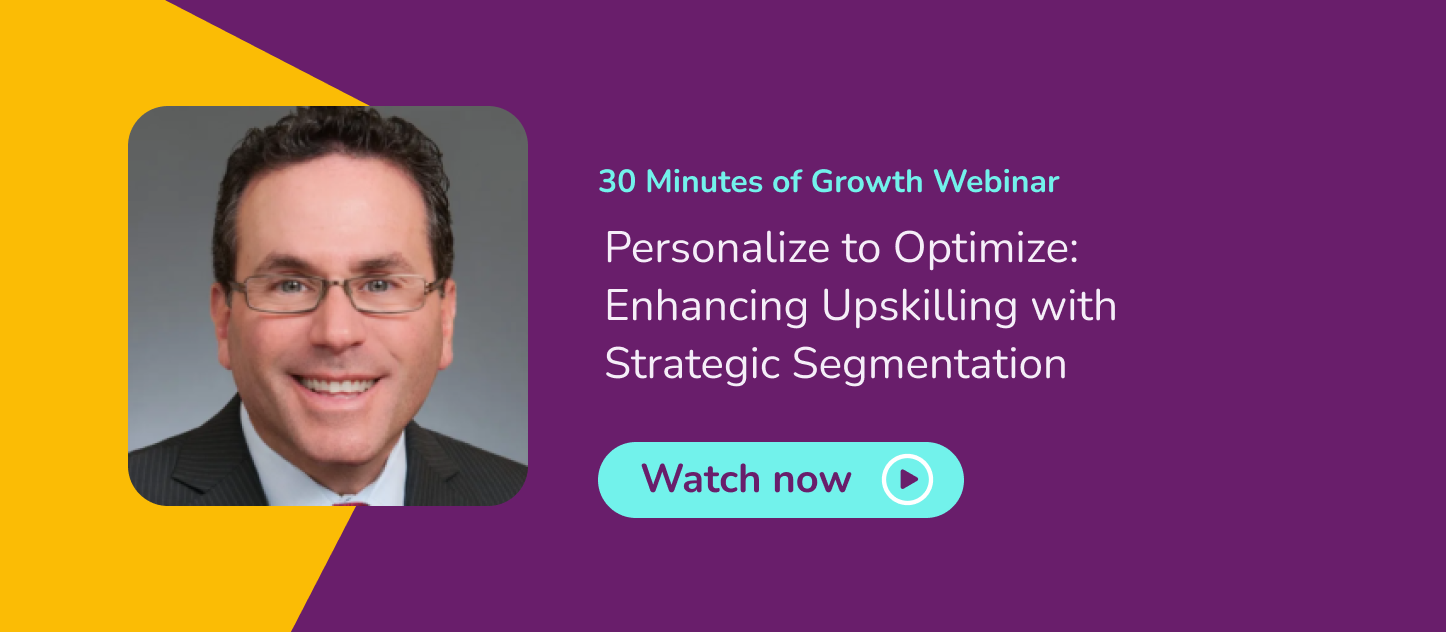As part of its ongoing 30 Minutes of Growth series, Growthspace presented the second installment, “Personalize to Optimize: Enhancing Upskilling with Strategic Segmentation.” This session aimed to explore how strategic segmentation can tailor talent development initiatives more effectively, providing valuable insights for HR and Learning & Development leaders looking to optimize their upskilling programs. Erin Biehl, a Talent Development Evangelist at Growthspace, moderated the discussion, which featured insights from Paul Lesser, former Head of Talent Acquisition, Development, & Learning at Fidelity Investments, and Omer Glass, Co-Founder and CEO of Growthspace.
The webinar illuminated several key areas of strategic segmentation in talent development:
Fundamentals of Strategic Segmentation: Paul Lesser opened the discussion by emphasizing the importance of identifying and understanding distinct employee groups within an organization. “Strategic segmentation is fundamentally about aligning your talent development efforts with your business objectives,” Lesser remarked. He stressed that such alignment ensures the efforts are both focused and impactful, making a real difference in the organization’s direction.
Personalization in Learning and Development: The dialogue underscored a shift from one-size-fits-all training programs to bespoke learning experiences. Omer Glass highlighted, “The future of talent development lies in personalization. Tailoring programs to meet the specific needs of diverse employee segments not only maximizes engagement but also enhances the overall effectiveness of these programs.”
Achieving Scale with Personalization: One of the primary challenges addressed was scaling personalized learning across large and diverse workforces. “Platforms like Growthspace are game-changers, enabling us to deliver personalized development experiences at scale, making sure no employee feels left behind,” Glass explained, showcasing the potential of technology in democratizing access to tailored learning opportunities.
Importance of Immediate Feedback: The speakers also delved into the critical role of real-time feedback in shaping and refining development initiatives. Lesser shared, “Immediate feedback allows us to measure the impact of our programs dynamically, adjusting our strategies to better meet both the growth needs of our employees and the evolving demands of the business.”
Overcoming Segmentation Challenges: A significant part of the conversation was dedicated to the communication strategies necessary for overcoming potential challenges associated with segmentation. “Transparency about the rationale behind targeted programs helps alleviate any feelings of exclusivity and builds an inclusive culture that fosters growth,” Lesser advised, underscoring the need for clear and open communication.
Alignment with Organizational Objectives: Conclusively, the session reiterated the criticality of aligning all talent development initiatives with the broader goals of the company. “Ensuring that every development effort is strategically aligned with our company’s objectives is key. It guarantees that our efforts are not just busywork but are contributing directly to our collective success,” Lesser concluded.
The “Personalize to Optimize” webinar not only illuminated the path to more impactful, tailored development programs but also sparked a dynamic conversation about the future of talent development. Through strategic segmentation and the judicious use of technology, Omer Glass and Paul Lesser made a compelling case for a more personalized, inclusive, and effective approach to upskilling. As we look forward, the insights shared in this session serve as a blueprint for HR and Learning & Development leaders striving to align talent initiatives with strategic business outcomes, thereby unlocking the full potential of their workforce in the evolving corporate landscape.
For a deeper dive into the conversation, watch the full video here:




